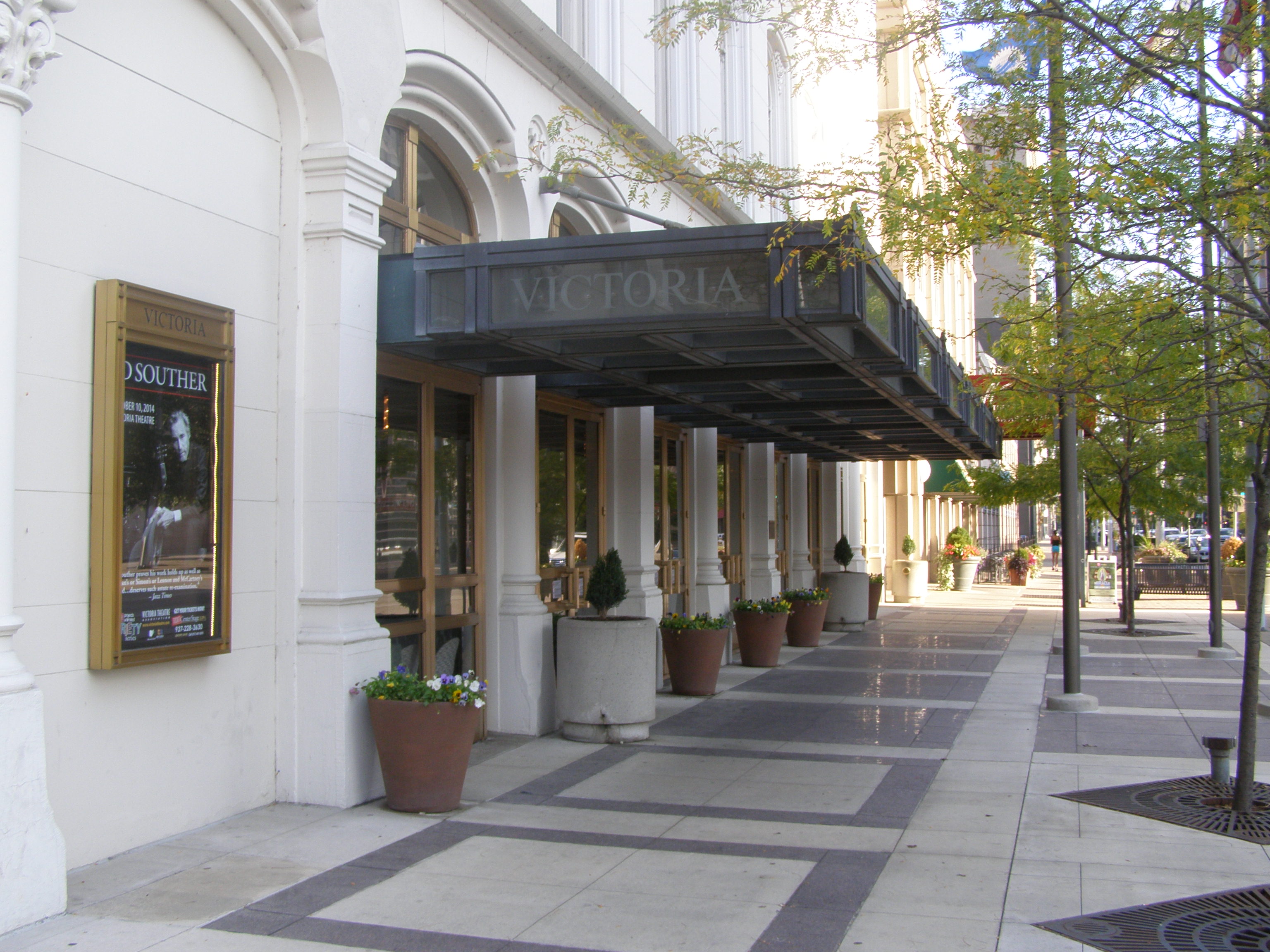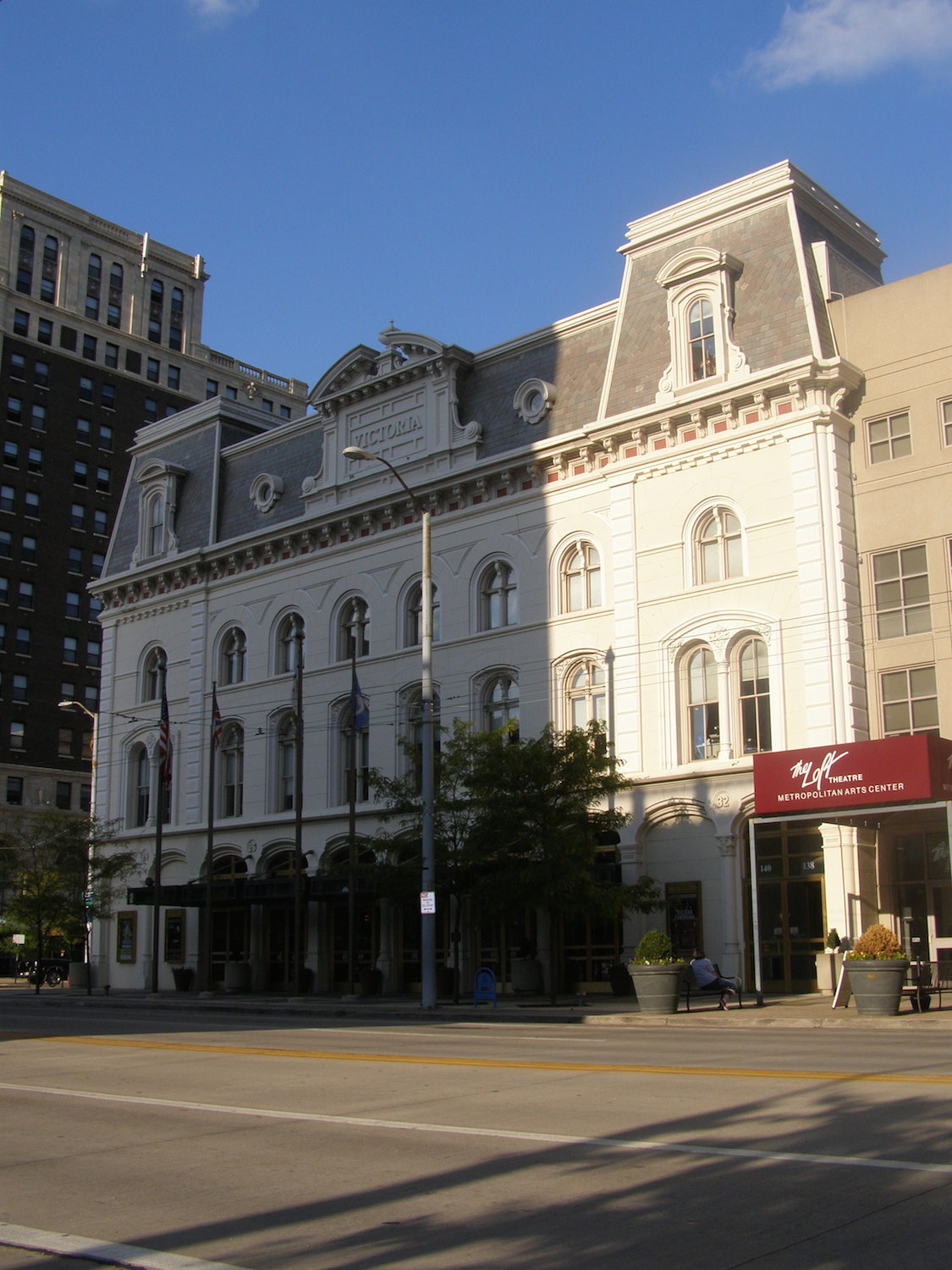


The first, nicknamed Vicky (get it?), is said to be that of an actress who disappeared after returning to her dressing room to retrieve a fan. Despite a lengthy and extensive search she was never found--not even her body. It's quite an eerie tale. In all likelihood she was murdered, but where, and when, and how? Assuming she was killed, how long was she permitted to live? I don't know what year this happened, but now she roams the theater from which she vanished, her arrival accompanied by the distinctive scent of her perfume and the sound of her rustling dress. The dress was even heard by a news crew from Dayton's WDTN Channel 2 when they came for Halloween 1990. She is occasionally seen by theater employees but tends to be skittish when addressed or approached.
Then there is the ghost of a remarkably gruesome suicide. His identity is unknown--likely a theater worker or an audience member--but he took his life in the house, making use of a seat in one of the rows. He fastened a knife somehow to the back of the seat in front of him and actually managed to deliberately impale himself on the blade. It seems like an extremely painful (not to mention unreliable) method, but he apparently did succeed, no doubt leaving a ghastly mess for some lucky usher to find. Although he took his life in the audience seats, his face appears in the folds of the curtain and has startled many performers backstage. This was before they replaced the curtain with doors, I'm told, so if the suicide's ghost still presents itself in the theater it has to do so in some other way.

The victim, known as Lucille, actually survived her assault and lived into old age. Since she passed many say her ghost joined the others at the Victoria. I hope very much that her spirit went somewhere else, somewhere better--anywhere but the place where she was so horribly victimized. Being condemned to return here would be a kind of hell.
Lucille was raped in the privacy box at house left--the left as you face the stage. I don't know who the assailant was, or what consequences he faced, or what year it happened. But ever since, visitors to that box seat have been able to feel Lucille's own anguish, terror, and pain. One person was actually slapped by an invisible hand. I would love to find out that none of this is actually true. But it's a very well known story, and the box is avoided as the worst place in the building. Aside from the horrifying details of this legend, it is unique in that no one died there--which begs the question, who is the ghost? If someone was slapped, whose hand did it? Again, the rapist's fate is a mystery to me, but it's safe to assume he didn't die there. Lucille, happily, lived a long and full life. But the utter anguish she experienced that day lingers on indefinitely at house left in the Victoria Theater.
As with so many public buildings, visiting is easy as long as you arrive on time. I found the box office closed and the glass foyer doors locked as early as 5:30PM on a Thursday. By far the best way to investigate the hauntings at the Victoria is to buy tickets to a play; live theater in such a phenomenal setting is too cool an idea to pass up, whether there are ghosts or not. As for the privacy box where the rape took place, I'm not sure if it's possible to go in. They may have it sealed off. And if they still seat patrons there, it is premium box seating, and part of what you pay for is that no one else is allowed to just walk in. Still, if it's between shows, you might be able to go there. (I'm not sure you'd want to, though, if the stories are true.)
